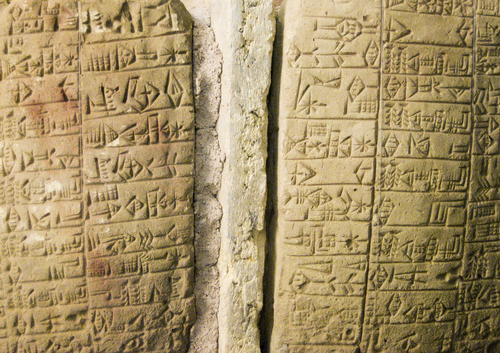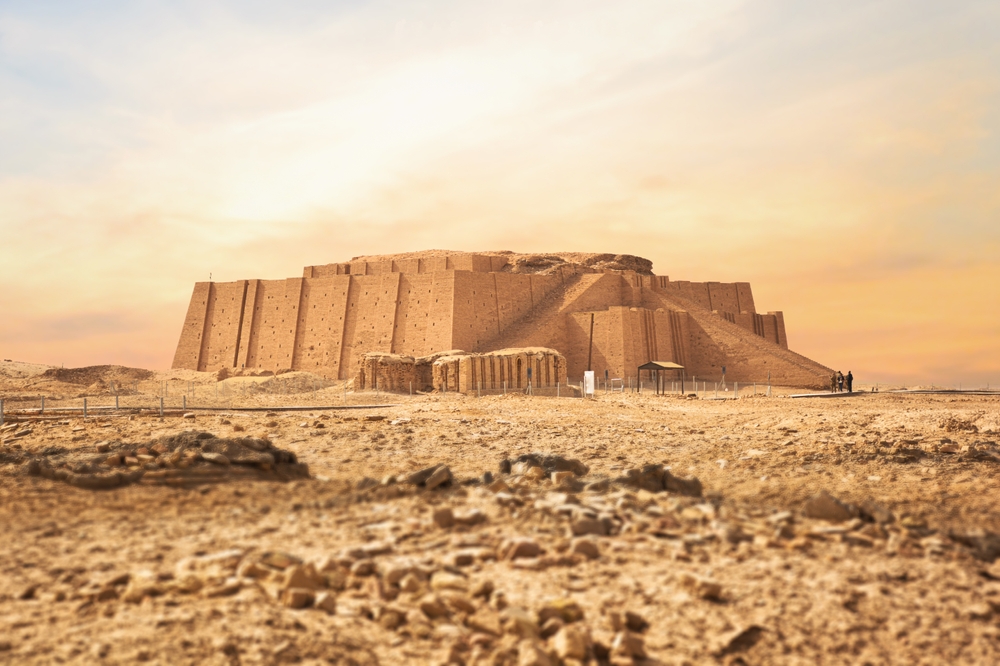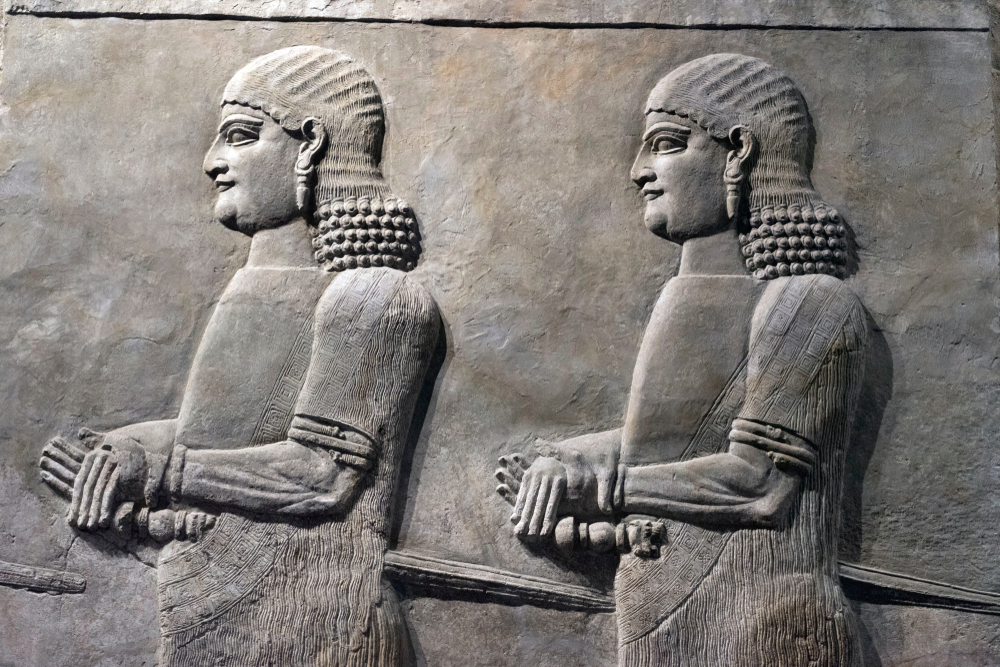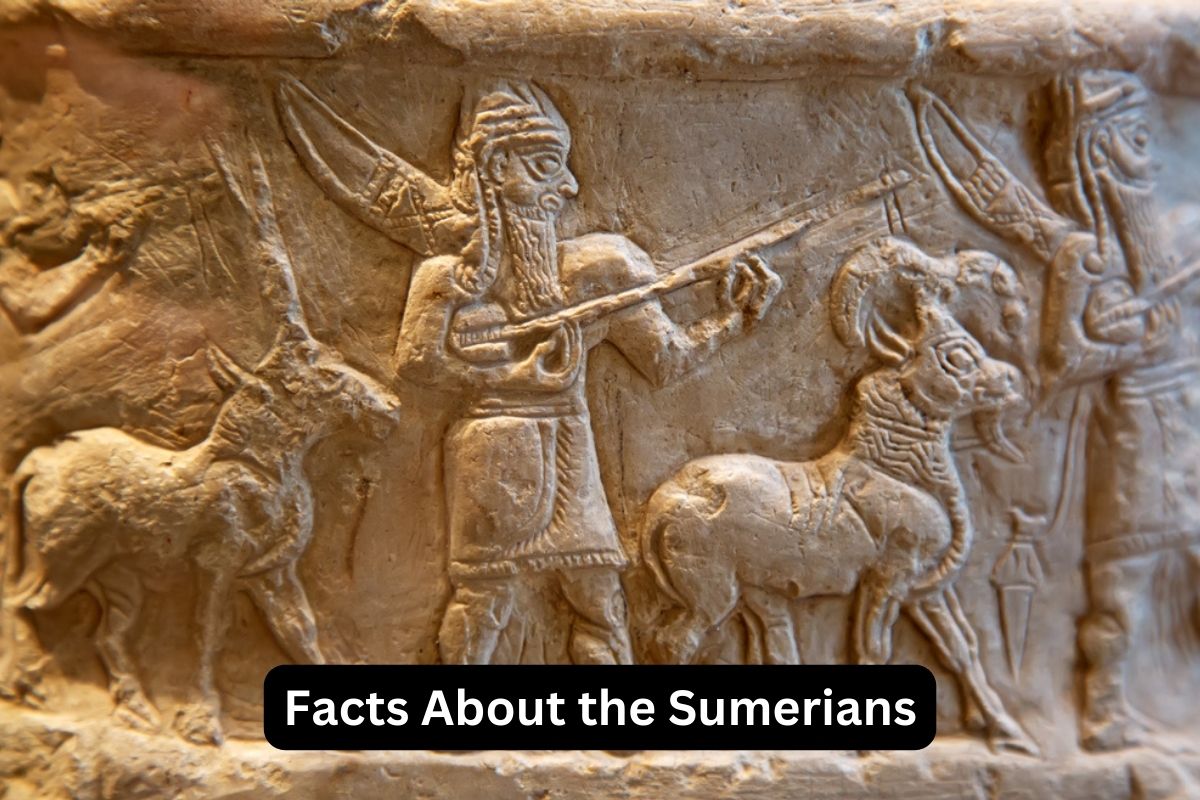The Sumerians were one of the earliest civilizations in human history, flourishing in Mesopotamia (modern-day Iraq and Kuwait) between the 4th and 3rd millennium BCE.
They were renowned for their remarkable achievements in various fields, including the invention of writing called cuneiform, the development of a system of city-states, and their expertise in agriculture, architecture, mathematics, and astronomy.
The Sumerians had a polytheistic religion with a pantheon of gods and goddesses, and their society had a complex social structure with rulers, priests, artisans, and slaves.
They engaged in extensive trade networks and produced rich literary works, such as the famous “Epic of Gilgamesh.”
Despite their eventual decline and absorption by other empires, the Sumerians left a lasting impact on subsequent civilizations in Mesopotamia and beyond.
Sumerians Facts
1. One of the earliest civilizations in history
The Sumerians were among the first civilizations to emerge in human history. They thrived in the region of Mesopotamia, which is often referred to as the “cradle of civilization.”
Also Read: Sumerians Timeline
The Sumerian civilization dates back to around 4000 BCE, and its influence laid the foundation for later Mesopotamian cultures.
2. Invented writing called cuneiform
The Sumerians are credited with inventing one of the earliest known writing systems called cuneiform. This writing system involved making wedge-shaped impressions on clay tablets using a stylus.
Also Read: Accomplishments of the Sumerians
Initially used for accounting and record-keeping, cuneiform gradually evolved to encompass a wide range of subjects, including literature, law, religion, and science. The decipherment of cuneiform texts in the 19th century provided valuable insights into Sumerian culture and history.

3. Developed a system of city-states
The Sumerians developed a unique political structure consisting of independent city-states. Each city-state had its own centralized authority, including a king or ruler who governed the city and its surrounding territories.
Some of the well-known Sumerian city-states included Ur, Uruk, Lagash, and Nippur. Each city-state had its own patron deity and its own distinct culture and economic activities.
While the city-states often engaged in trade and warfare with one another, they also shared a common Sumerian culture and language.
The city-states were centers of political, economic, and religious life, with monumental buildings, temples, and administrative structures representing their power and prosperity.
4. Skilled in agriculture, architecture, mathematics, and astronomy
The Sumerians made significant advancements in various fields. In agriculture, they developed sophisticated irrigation systems to manage the waters of the Tigris and Euphrates rivers, enabling them to cultivate fertile lands.
Their architectural achievements include the construction of monumental structures like ziggurats, which were towering temple complexes built with terraced levels. These structures served as religious centers and symbols of the Sumerians’ devotion to their gods.
In mathematics, the Sumerians developed a numerical system based on the sexagesimal (base 60) system. They were able to perform complex calculations, including multiplication, division, and geometric calculations. Their mathematical knowledge was crucial for tasks such as land surveying and trade.
Regarding astronomy, the Sumerians were keen observers of celestial bodies. They created one of the earliest known star catalogs and tracked the movements of planets, stars, and constellations. Their observations helped establish the foundation for later Babylonian and Greek astronomical studies.
5. Had a polytheistic religion with a pantheon of gods
Religion played a central role in Sumerian society. They worshipped a pantheon of gods and goddesses, which numbered in the hundreds. These deities represented various aspects of life, such as fertility, war, wisdom, and craftsmanship.
Some of the prominent Sumerian gods include Enlil, the god of storms and agriculture, Inanna, the goddess of love and war, and Utu, the god of the sun.
The Sumerians built magnificent temples called ziggurats as sacred spaces to honor their deities. They believed in maintaining a favorable relationship with the gods through offerings, rituals, and prayers to ensure their well-being and prosperity.

6. Had a complex social structure and practiced slavery
Sumerian society was organized hierarchically. At the top were the rulers and priests who held significant power and authority. The ruling class controlled the political, religious, and economic affairs of the city-states.
Below them were the free citizens, which included skilled artisans, merchants, and farmers. These individuals contributed to the economy and society but had fewer privileges than the ruling elite.
However, Sumerian society also had a significant population of enslaved individuals. Slavery was prevalent, and slaves were obtained through various means, including war, trade, and debt.
Slaves were considered property and were engaged in various tasks such as agricultural labor, household chores, and working in temples or palaces.
While they had limited rights and freedoms, some slaves could earn their freedom or obtain a higher social standing through exceptional service or special circumstances.
7. Engaged in extensive trade networks
The Sumerians were active participants in long-distance trade. Located in the fertile Mesopotamian region, they had access to valuable resources such as timber, metals, and agricultural products.
The Sumerians traded these goods with neighboring regions such as Anatolia (modern-day Turkey), Iran, and the Indus Valley. They established trade routes by land and water, using donkeys, ships, and wheeled carts.
Trade not only facilitated the exchange of goods but also led to cultural diffusion as ideas, technologies, and beliefs spread across different regions.
8. Produced rich literary works, including the “Epic of Gilgamesh”
The Sumerians had a flourishing literary tradition. They composed epic poems, hymns, myths, and other forms of literature. The most famous example is the “Epic of Gilgamesh,” an epic poem that tells the story of a legendary king named Gilgamesh and his adventures.
Also Read: Facts About the Epic of Gilgamesh
This epic is considered one of the earliest surviving works of literature in the world and offers insights into Sumerian mythology, religion, and societal values. Sumerian literature often emphasized themes of heroism, friendship, mortality, and the relationship between gods and humans.

9. Believed in an afterlife and had views on the underworld
The Sumerians had a complex belief system that included an afterlife. They believed that after death, the soul of an individual would journey to the realm of the dead. This realm, known as the underworld or “Kur,” was seen as a dark and somber place.
The Sumerians believed that a person’s fate in the afterlife was determined by their actions in life. They practiced funerary rituals and buried their dead with objects and offerings to ensure a successful journey and a favorable afterlife.
The Sumerians also believed in various deities associated with the underworld, such as Ereshkigal, the queen of the underworld.
10. Declined and were eventually conquered by other empires
The Sumerian civilization eventually faced a decline due to various factors. Internal conflicts, external invasions, and environmental challenges such as drought and soil salinization contributed to their decline.
Over time, Sumerian city-states were conquered by other emerging powers in the region. One notable conquest was by the Akkadians, led by Sargon of Akkad, in the 24th century BCE. The Akkadian Empire assimilated Sumerian culture and adopted their language, contributing to a blend of Sumerian and Akkadian traditions.
While Sumerian political dominance declined, elements of Sumerian culture, including their writing system and religious beliefs, continued to influence subsequent civilizations in Mesopotamia, such as the Babylonians and Assyrians.
